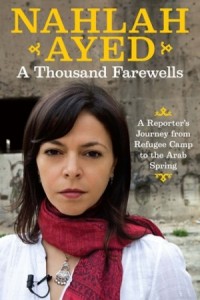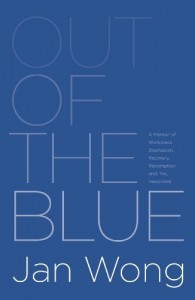Vancouver artist Sarah Gee studied creative writing at the University of Victoria but is now known primarily as a visual artist. Lynne Van Luven talked with Gee recently about her creative process. Gee’s current exhibition of collage works, “Stuck,” is showing at the Slide Room Gallery, Vancouver Island School of Art, 2549 Quadra Street. The show, curated by Tyler Hodgins, runs until Feb. 18, 2013.
Sarah, you strike me as someone whose creative life is always evolving, sometimes between really different forms of expression. Can you talk a bit about your shift from studying writing to becoming a practising visual artist?
For a long time, growing up, I assumed I would be a writer. I came from a highly literate family and I seemed to have the knack for it. I received a degree in Creative Writing and loved that protective, isolated environment, but I never wrote seriously after university. Part of that was due to the immediate pressures of life, which meant a series of low-paying jobs. When I first tried making art, it was more text than image, which betrayed a lack of confidence on my part. But it felt wrong – contrived, somehow, a shortcut, maybe even a falsehood, relying on language when what I wanted was beyond language. Maybe it has something to do with being wary of unequivocal expression, I’m not sure. Now my work is about as mute and ambiguous as it’s possible to be. And I don’t have the knack for visual arts the way I had for writing. It’s really hard, and I fail a lot! But it feels right.
In the publicity for your show at the Deluge Contemporary Gallery in Victoria in the summer of 2012, you were quoted as saying: “I use collaged paper to compose what could be called geometric abstraction, but I sometimes think of it as heretical geometry: formalism combined with the psychedelic.” Could you “unpack” that statement a little bit more and discuss the spatial aspects of your vision as an artist?
If I’m using geometry as a kind of utopian language, that seems heretical to me, in a funny sort of way. I’m more of an idealist rather than biographical or political artist, and I’m hoping for a kind of transcendental experience when you look at my work. Most compositions are made of repeated geometric shapes, and because there is something hypnotic about repetition with slight variation, the image can invoke a sort of theta wave response. That’s where the psychedelia comes in. Psychedelia tries to unlock the mind through intense, vibrating colour and radical, often sexualized imagery. It all looks a little silly today, but I appreciate what they were trying to do, and in my own way I’m attempting the same thing. I don’t know if I unpacked that statement or just crammed a lot more junk into it.
How does the “vocabulary” of art differ from that of creative writing? Or does it?
Creation of all kinds demands the same things from the maker. Be honest and accurate. Avoid cliché by knowing the history of your craft. The only thing that may separate the majority of writing with what goes on in the art world is the act of deliberate provocation. The art world is far more addicted to what I call The Grand Startle than the literary world. Visual artists make work that will most certainly be perceived as ugly, unlikable, or just plain confusing. Yes, there are great experimental writers, from James Joyce to Mark Danielewski, but it’s not part of the larger writing culture. Writers, in my opinion, try to orient you to the world, while visual artists try to disorient you. Through disorientation – shock, bafflement, or in my case, the mysteries of abstraction – hopefully you can come to a new kind of thinking.
With your current show in Victoria, are you marking the end of one period of your work and getting ready to segue into another?
I’m not sure my themes or my methods will change in the near future, but any exhibit is a natural end period – you get to see your work for the first time outside the studio, and it feels elegiac somehow. But when I get a bone I don’t let go. Right now I’m obsessed with these horizontal stacked forms, these “totems,” and I can’t seem to make anything else!
What are you reading right now, and does it somehow inform your art?
Being self-taught, I do a lot of reading about the history of art, and right now I’m reading a coffee table book about, of all things, how big tobacco companies in the 40s and 50s collected amazing contemporary art. It’s filled with drool-inducing photos of industrial spaces crammed with Lichtensteins and Picassos, all with a kind of democratic approach to art that seems not only radical, but sadly obsolete now. But by far the bulk of my reading right now is crime fiction. I’ve come to realize there’s a strong correlation between a mystery novel and my own aims as an artist. Both are concerned with bringing disparate elements into harmony, and both expose secret or hidden aspects of life in an attempt to make sense of it all. I find life mostly bewildering and painful, and the idea of a neat resolution is very alluring.


